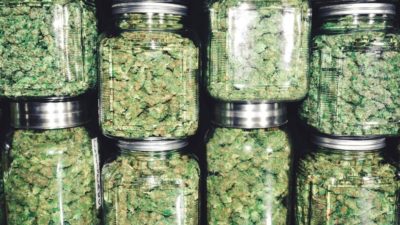Over the last year there has been a rush of intermediate oil explorers and producers in Canada’s oil patch slashing monster dividends as they battle mountains of debt and declining cash flows. Among these were one-time darlings Lightstream Resources (TSX:LTS) and Penn West Petroleum (TSX:PWT)(NYSE:PWE).
One company that cut dividends earlier than the majority of its peers is Pengrowth Energy (TSX:PGF)(NYSE:PGH). It took the axe to its dividend payment and capital expenditure in July 2012 in order to restore a tattered balance sheet and rebuild cash flow and profitability. This saw its dividend slashed by over 40% and capex cut by $200 million as it desperately sought to reduce leverage and preserve cash.
It still pays a monster dividend yield of 7%, one of the best in the patch. But the big question for investors is whether the dividend is now sustainable and whether it has turned a corner with the successful implementation of its turn-around strategy.
Financial and operational results continue to improve
Despite reporting a full-year 2013 net loss of $317 million or $0.61 per share, compared to a 2012 net profit of $0.03 per share, Pengrowth’s core operational and financial results continued to improve. For the full-year 2013, revenue popped nicely by almost 12% in comparison to 2012 as did funds flows from operations, which were up 4% for the same period.
This was also the third consecutive year where Pengrowth’s revenue grew, which is a considerable achievement, considering oil production fell 18% in comparison to 2012. Furthermore, a significant portion of the net loss totaling $138 million can be attributed to losses on the disposition of properties which were sold during the year.
More importantly, Pengrowth hit its operational guidance for 2013, reporting average daily oil production of 84,500 barrels, with operating as well as general and administrative expenses coming in lower than originally forecast. The 18% decrease in oil production year over year can also be attributed to the oil and gas assets sold in 2013, rather than operational outages.
Pengrowth’s balance sheet also strengthened during the quarter. In comparison to 2012, cash and cash equivalents popped a whopping 1,600% to $449 million, boosted by the proceeds of asset sales. Debt fell 7% for same period to $1.6 billion, leaving Pengrowth with a respectable and sustainable debt management ratio of 1.8 times its cash flow.
This is significantly lower than Lightstream’s debt of 3.3 times cash flow and Penn West’s 3.5 times. Both companies are desperately trying to reduce their debt to more sustainable levels by slashing capital expenditure and dividend payments as well as selling non-core oil and gas assets.
Is the dividend now sustainable?
Pengrowth’s dividend yield of 7% is certainly one of the better yields in the patch. It compares favorably to Crescent Point Energy’s (TSX:CPG)(NYSE:CPG) 6.8%, Lightstream’s 8.8% and Penn West’s 6%.
But its sustainability appears shaky even after being slashed by over 40% in 2012. A key measure of dividend sustainability is the dividend payout ratio. This is calculated by dividing the total dividend paid by net income. Any resulting ratio over 100% is generally considered to be unsustainable over the long term.
With Pengrowth reporting a net loss for 2013 it is not possible to calculate the dividend payout ratio, but if we examine the previous year, it had a startlingly high payout ratio of 2,200%. But there are other ways to calculate the sustainability of dividend payments.
A preferred methodology for oil companies is to calculate the ratio by dividing the dividend paid by operating cash flow. This is because cash flow excludes a number of non-cash items that negatively impact net income, giving a more accurate representation of the dividends sustainability. Pengrowth gives a payout ratio of 44%, indicating the dividend payment is in fact sustainable.
What is worrying is once capital expenditure – a necessary investment in building sustainable oil production – is deducted from cash flow the dividend ratio is well over 100% and appears unsustainable. By continuing to pay a dividend with such a high payout ratio, Pengrowth’s working capital will diminish and its balance sheet again deteriorate. That leaves it forced to fund both its dividend and capital expenditure through borrowings, asset sales or both.
Pengrowth’s management has committed to maintaining a monthly dividend of $0.04 per share, giving it the juicy yield of 7% and I suspect the plan is to fund it by way of asset divestments until operational cash flow grows sufficiently.
Is Pengrowth attractively valued?
Another aspect of Pengrowth making it tempting to investors is that it is attractively valued with an enterprise value of a mere 11 times oil reserves. It also looks appealing when a range of other valuation measures are used to compare the value oil companies to their peers.
This includes enterprise-value to EBITDA and barrels of oil produced daily as shown by the chart.

Pengrowth is attractively priced on the basis of those ratios when compared to its peers even after the value of its shares firmed 12% over the last year.
Foolish bottom line
Despite the doubts surrounding the sustainability of Pengrowth’s dividend, it is undeniable the company’s balance sheet is stronger and it trades at an attractive valuation. Furthermore, if management is able to boost cash flow to a point where the dividend becomes sustainable, it becomes a particularly appealing investment for income-hungry investors.







